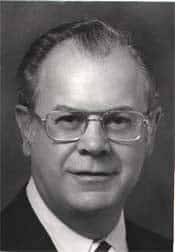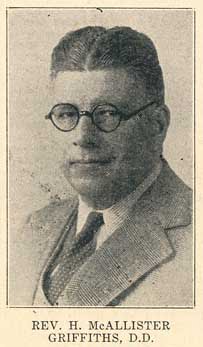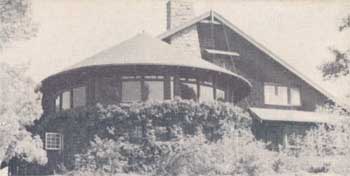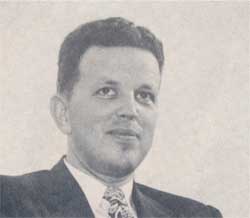First up today, we want to recognize the anniversary date for the following PCA churches organized [particularized] on this day, in the year indicated. Nearly one-third of all PCA churches pre-date the 1973 formation of the PCA, and for most of those churches, we do not presently know their exact date of organization. Typically it is the newer churches where we have that information. Please let us know if we missed a church’s anniversary date and we’ll add it to our list for future use. In some cases here we are using the date when the church came into the PCA, rather than when it was organized.
Christ Presbyterian Church, Clarkesville, GA [North Georgia Presbytery], organized on this day in 2002.
Orlando Korean Presbyterian Church, Orlando, FL [Korean Southeast Presbytery], was organized on this day in 2011.
As well, we would remember our Fathers and Brothers in the Faith, those who have gone before us:
 The Rev. Donald J. MacNair died on this day, March 3rd, in 2001. Born in 1922 and educated at Rutgers University and Faith Theological Seminary, his first pastorate was with the BPC church in Coatesville, PA. Answering a call to serve The Covenant Presbyterian Church in St. Louis, he oversaw the relocation of that church and helped to design its new building. From 1964-1982, Rev. MacNair served as the head of National Presbyterian Missions (NPM), the church planting arm of the RPCES. While it was Dr. Edmund P. Clowney who came up with the idea of the Joining & Receiving method of merger, it was Don MacNair who was widely recognized as the architect of J&R and who worked tirelessly to bring about the reception of the RPCES into the PCA in 1982. In effect, he worked himself out of a job, since the PCA already had in place a director for its Mission to North America, NPM’s counterpart. Not one to sit around, Dr. MacNair then formed Churches Vitalized, a ministry to struggling churches. Both the Donald J. MacNair manuscript collectionand the records of Churches Vitalized are preserved at the PCA Historical Center. The latter collection is awaiting processing at this time.
The Rev. Donald J. MacNair died on this day, March 3rd, in 2001. Born in 1922 and educated at Rutgers University and Faith Theological Seminary, his first pastorate was with the BPC church in Coatesville, PA. Answering a call to serve The Covenant Presbyterian Church in St. Louis, he oversaw the relocation of that church and helped to design its new building. From 1964-1982, Rev. MacNair served as the head of National Presbyterian Missions (NPM), the church planting arm of the RPCES. While it was Dr. Edmund P. Clowney who came up with the idea of the Joining & Receiving method of merger, it was Don MacNair who was widely recognized as the architect of J&R and who worked tirelessly to bring about the reception of the RPCES into the PCA in 1982. In effect, he worked himself out of a job, since the PCA already had in place a director for its Mission to North America, NPM’s counterpart. Not one to sit around, Dr. MacNair then formed Churches Vitalized, a ministry to struggling churches. Both the Donald J. MacNair manuscript collectionand the records of Churches Vitalized are preserved at the PCA Historical Center. The latter collection is awaiting processing at this time.
Also on this day, the Rev. Robert James Ostenson, one of the founding fathers of the PCA, died on March 3, 2008. Born in 1922, he prepared for the ministry at Fuller Theological Seminary (BD, 1953) and was later awarded the Doctor of Divinity degree by Belhaven College in 1969. He was ordained by Mississippi Presbytery in 1953 and installed as the pastor of the Woodville and Gloster, MS churches, where he served for three years. At the time of the formation of the Presbyterian Church in America, he was serving as the pastor of Granada Presbyterian Church in Coral Gables, FL., 1965-1974. In his final pastorate, he returned to serve that church again, from 1987-1989.
 And on this day, March 3, 1993, the Rev. John Galbreath Armes passed away. Born in 1918, his father was Roland K. Armes, a stalwart Presbyterian and a leader in the Bible Presbyterian Synod. John received his education at Hampden-Sydney College and Faith Theological Seminary before licensure and ordination by the Philadelphia Presbytery of the BPC. Rev. Armes served as a chaplain in the U.S. Navy, 1944-46 and was Assistant General Secretary of the Independent Board for Presbyterian Foreign Missions from 1946-51. Leaving that post, he served as a foreign missionary in Kenya from 1951-1982. He was honorably retired in 1984 by the Northeast Presbytery of the PCA.
And on this day, March 3, 1993, the Rev. John Galbreath Armes passed away. Born in 1918, his father was Roland K. Armes, a stalwart Presbyterian and a leader in the Bible Presbyterian Synod. John received his education at Hampden-Sydney College and Faith Theological Seminary before licensure and ordination by the Philadelphia Presbytery of the BPC. Rev. Armes served as a chaplain in the U.S. Navy, 1944-46 and was Assistant General Secretary of the Independent Board for Presbyterian Foreign Missions from 1946-51. Leaving that post, he served as a foreign missionary in Kenya from 1951-1982. He was honorably retired in 1984 by the Northeast Presbytery of the PCA.
Image sources:
1. Portrait photograph of the Rev. Donald J. MacNair, from the MacNair manuscript collection.
2. Portrait photograph of the Rev. John G. Armes, from The Independent Board Bulletin, 14.1 (January 1948): 8.
All digital scans by the staff of the PCA Historical Center.
Words to Live By:
“Therefore let us also, seeing we are compassed about with so great a cloud of witnesses, lay aside every weight, and the sin which doth so easily beset us, and let us run with patience the race that is set before us, looking unto Jesus the author and perfecter of our faith, who for the joy that was set before him endured the cross, despising shame, and hath sat down at the right hand of the throne of God.” (Hebrews 12:1, ASV)



